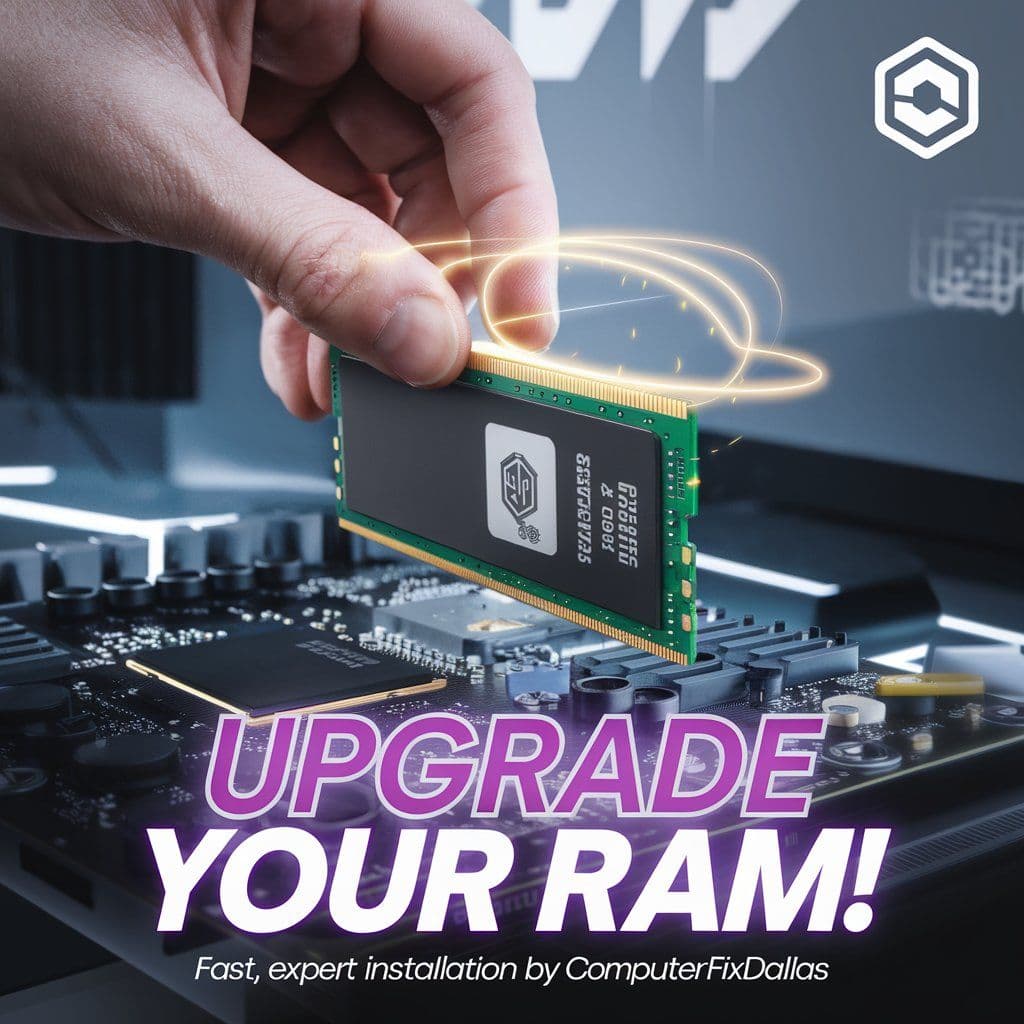12 NOV 2024
Why and How to Upgrade Your RAM: A Guide by ComputerFixDallas Experts

@2024 ComputerFixDallas
12 NOV 2024
Why and How to Upgrade Your RAM: A Guide by ComputerFixDallas Experts

RAM is one of the biggest factors in your computer's performance, providing your CPU temporary storage for commonly accessed data. Compared to permanent storage on the hard drive or SSD, it's faster, providing quicker retrieval of data, which makes multitasking smoother. This helps when you are on several applications or working with heavy data programs such as video editing software and large data in spreadsheets. What this really means is that it helps your computer keep up with whatever you throw at it, reducing lag and "freezing." In simple terms, the more RAM you have, the better and more efficient your computer will execute tasks and multitasking.
Signs Your System Needs a RAM Upgrade. Here's when you might do so:
1. System Slows Down with Multiple Programs: If it seems to you that your computer is slowing down every time you have more than one or two applications open, this may be a sign that you're running low on RAM.
2. Running Resource-Intensive Programs: Applications such as Adobe Photoshop, AutoCAD, or virtual machines require a decent amount of memory in order for them to run smoothly.
3. Frequent Crashes and Freezes: If your system frequently crashes or hangs, especially when there is much workload, then an upgrade to higher RAM may take care of these problems.
4. Upgrade of Other Components: You may want to upgrade other elements of the computer, such as the processor or the GPU; in such a case, it would make sense to further complement that upgraded power with an appropriate amount of RAM.
5. Gaming: The same holds true for gaming. Most modern games require fairly substantial RAM to prevent lagging, so if you're a gamer, you will want to look at least at 16GB or as much as 32GB upgrade.
Performing a RAM upgrade often sounds like it's going to be more difficult than it actually is. Here's how to get started:
1. Check Compatibility: First of all, you will want to understand how much RAM your computer has at present, along with its RAM type. Check these from your system information or check your computer specification from the manufacturer's website.
2. Choose the Right RAM: You need to buy the proper type of RAM compatible with your motherboard, such as DDR3, DDR4, or DDR5. The speed and capacity limits should be checked.
3. Power Off and Disconnect: Switch your computer off and unplug it from the power source before opening. Also, use an anti-static wristband or touch metal to discharge the static electricity.
4. Open the Case and Locate RAM Slots: Once you have opened your computer, locate the RAM slots on the motherboard of your computer. Remove any existing RAM sticks, if necessary, by releasing the clips that hold the RAM sticks in place on either side.
5. Installing the New RAM: Align the new RAM stick towards the slot, then gently push it down until you hear it click with the clips. Be light but firm enough so that it snugly fits into its place.
6. Closing and Testing: Place the RAM, close the case, reconnect your computer, and power it on. Now, go to the system properties and check that the amount of RAM is recognized by your computer.
Upgrading your RAM can give your computer a new life by improving the speeds, responsiveness, and overall performance. At ComputerFixDallas, our pros are ready to make the upgrade with you, ensuring compatibility and installation are done right. Whether it's for running extensive programs, gaming, or multitasking, our team is able to assist you in selecting and installing only the best RAM suited for your needs. Allow us here at ComputerFixDallas to take your computer to its peak performance by reaching out today!
Newsletter
Get Notified By Our Newsletter
Explore More Blogs
Explore Insights and Repair Tips Here
@2024 ComputerFixDallas